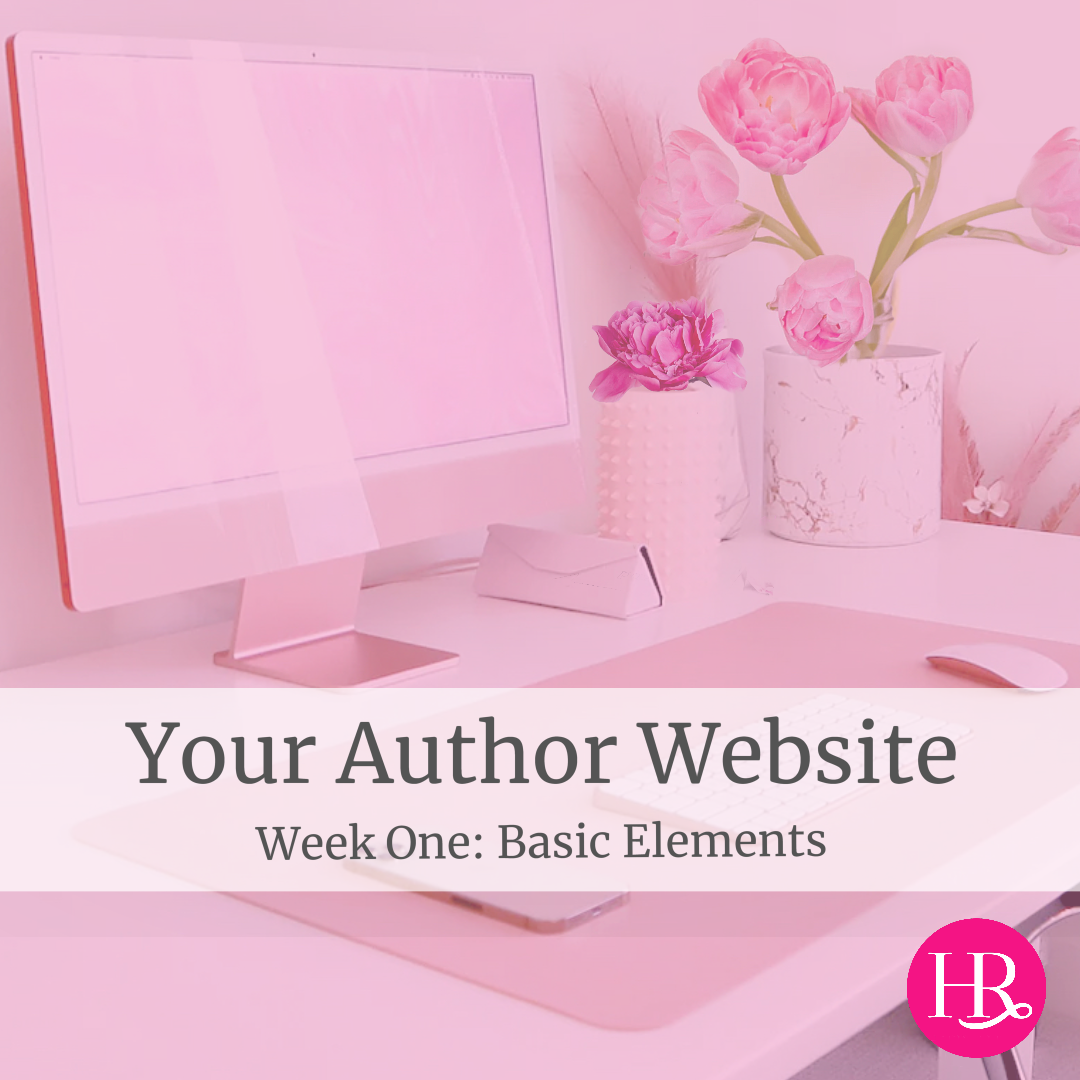Your Author Website ~ Week One
Week 1: Basic Elements
Do an online search for any of the biggest authors in your genre and you’ll probably find that they have a website. Why do we need one as an author and how can it help us?
When readers read your book for the first time, if they feel a strong connection to your story, they’ll try to find more books by you or want to know more about you. Many, many of them will do a search on their phones just as I’d told you to do at the opening of this post. They’ll type in your name. When they do, what will they find? What you want them to find first is content that you control—your website.
Your author website is, first and foremost, for the reader. It’s where you tell readers about you, your books, and your brand—nothing else. With a website, you have complete control over the content, and you can customize it to fit your readers’ needs. Your social media platforms could disappear tomorrow, and all those followers would be lost. But with a current, attractive website, you control who sees what. Forever.
You will also have a location to generate an email list of readers from signups on your website that will never go away. (And will prove to be pivotal in increasing sales.)
What should be your top content? What do your readers want to see on your site? It’s not as much about producing what you like on your site as it is producing what your readers are looking for. Don’t forget: the website is for them, rather than you.
Readers want to read about who you really are, not marketing copy packed with keywords. Your language on your site should be professional, representative of your brand, and relatable.
Here’s a list of possible tabs for your website and what should be on each page. (Only include the elements that showcase what you have to offer your readers.)
Home
This front page is an introduction to who you are. It should be simple, not too crowded with text, illustrative of your brand, and image-heavy. This page should have a short intro about you (as an author), an on-brand, professional photo of you, a sign-up for your email list (or popup), your social media links, and, at the very least, your most recent book. (I have a scroller of all my books at the bottom of the Home page as well.)
About
This is a detailed bio about who you are. It shouldn’t be rambling, but longer than the bios on your social media and Home page. And it should have an author focus. If you’re a brand-new author, talk about your journey to get here. If you’re a mid-list author, showcase your journey, your books and any awards or reviews you may have gotten. If you’re an established author, list accolades, reviews, and career highlights (with “highlights” being the key word). Remember the old rule that a resume should be able to fit on a page? The same holds true here. At the end of your bio, you can list a few of your other interests: “When I’m not writing, I’m running around Nashville with my camera in hand or kicked back in an out-of-the-way spot, listening to live music.”
Media Kit
We’ll delve more into this, why you need it, and how it looks for new authors all the way to seasoned authors, next week.
Books
Your books page should have an image of the book cover(s) with clickable links directly to the retailer. On my author website, you’ll see that I have all the covers in a grid pattern. When you click on a specific book, it takes you to that book’s landing page where there is an image of the book, a retail description, a button for book club discussion guide questions, and clickable links for each retailer.
Audiobooks
Audiobooks are rapidly growing in popularity, and their growth is expected to balloon by about 25% over the coming decade. Having them all in one spot on your website makes a lot of sense. On my own website, my audiobooks are arranged in a grid and each one is a clickable link to the retailer.
Blog
For an author, this is a space to showcase your career and what’s going on currently. Remember, your readers will be going to this site, so you’ll want to provide information here that will interest them. I prefer to use mine as a billboard for what’s going on in my author career. You can see mine here.
Contact
It’s always good to have a contact page with a fillable form that connects to your email. This will allow readers to get in touch with you in a secure way. Many of them will want to drop you a line to let you know how much they enjoyed the book. It also allows others in the industry a place to reach out should they want to include you in giveaways, have questions, or offers. (I got my first TV deal from a screenwriter’s email through my contact page.)
Join me next week as I get into the nitty gritty of the media kit, what it’s for, and why you need it.
© Jenny Hale, 2023
